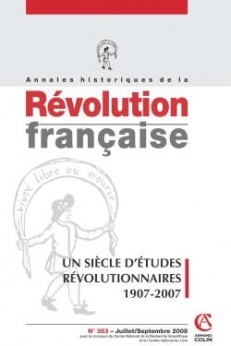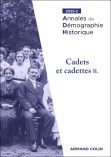
Annales historiques de la Révolution française n° 353 (3/2008)
Pour acheter ce numéro, contactez-nous
Recevez les numéros de l'année en cours et accédez à l'intégralité des articles en ligne.
Les rapports entre les AHRF et l’historiographie italienne sont examinés ici en trois étapes. Dans un premier temps, c’est surtout la Nuova rivista storica fondée en 1917 par Corrado Barbagallo qui attire l’attention d’Albert Mathiez, en raison de ses intérêts d’histoire économique et sociale et de sa défense des liens entre Révolution française et Risorgimento italien. La direction de Georges Lefebvre coïncide largement avec l’élan des études italiennes sur la période révolutionnaire dans les milieux de l’exil et de l’anti-fascisme, qui se reflète dans la richesse des notices et des comptes rendus publiés dans la revue. Dans une troisième phase, Jacques Godechot assume un rôle de plus en plus important comme commentateur des ouvrages italiens. Ses commentaires traduisent quelques préjugés et incompréhensions à l’égard de l’historiographie italienne, qu’il considère modelée par Croce. Ils confirment en tout cas la force des liens et des échanges entre les deux historiographies.
The relationship between the AHRF and Italian historiography are examined in this article in three stages. In the fi rst, it was above all the Nuova rivista storica founded 1917 by Corrado Barbagallo that attracted the attention of Albert Mathiez, because of his interest in economic and social history and his defense of the link between the French Revolution and the Italian Risorgimento. In the second, the direction of Georges Lefebvre largely coincided with the burst of Italian studies on the revolutionary period among those in exile and anti-fascist, refl ected in the quality of notes and reviews published in the journal. In the third phase, Jacques Godechot assumed the increasingly important role as commentator of Italian works. His commentaries contained a few prejudices and misunderstandings about Italian historiography that he considered as shaped by Croce. Still, these phases confi rmed the strong relationship and exchanges between the two historiographies.
